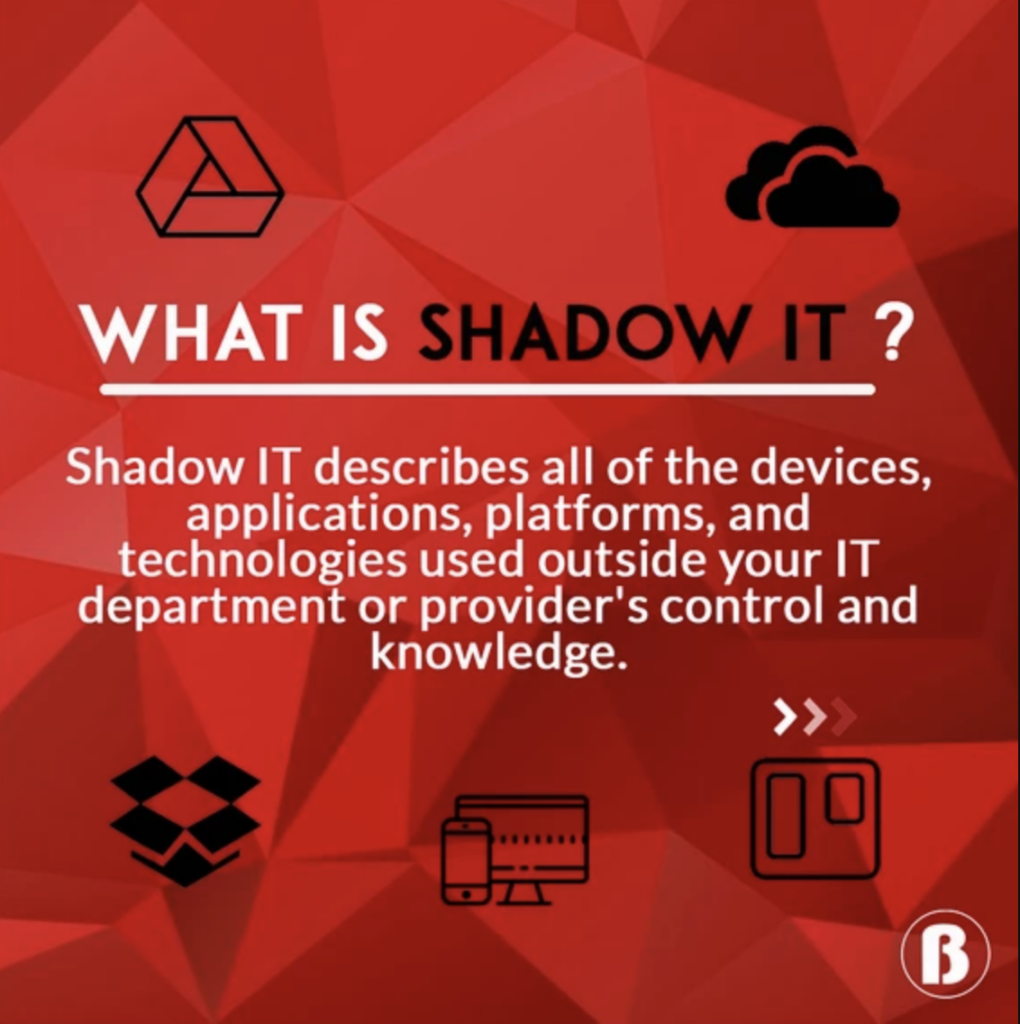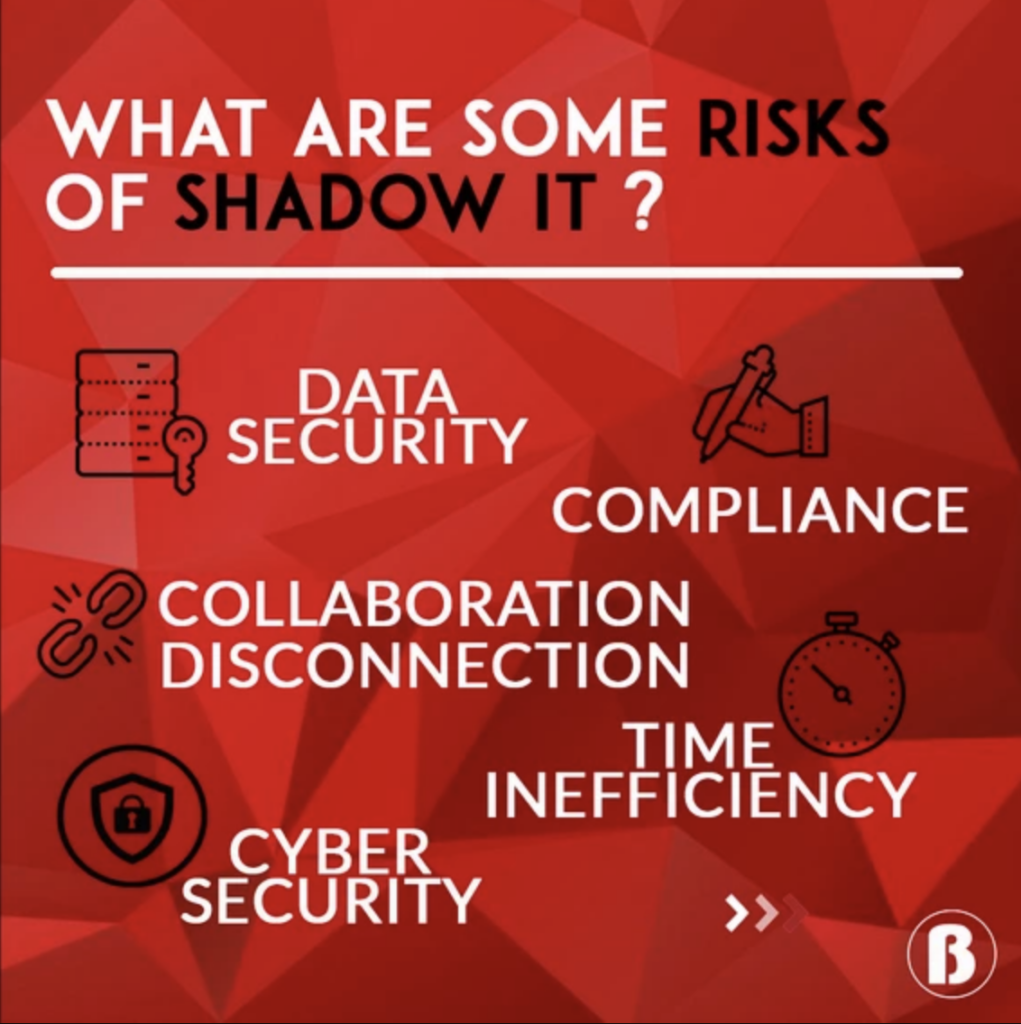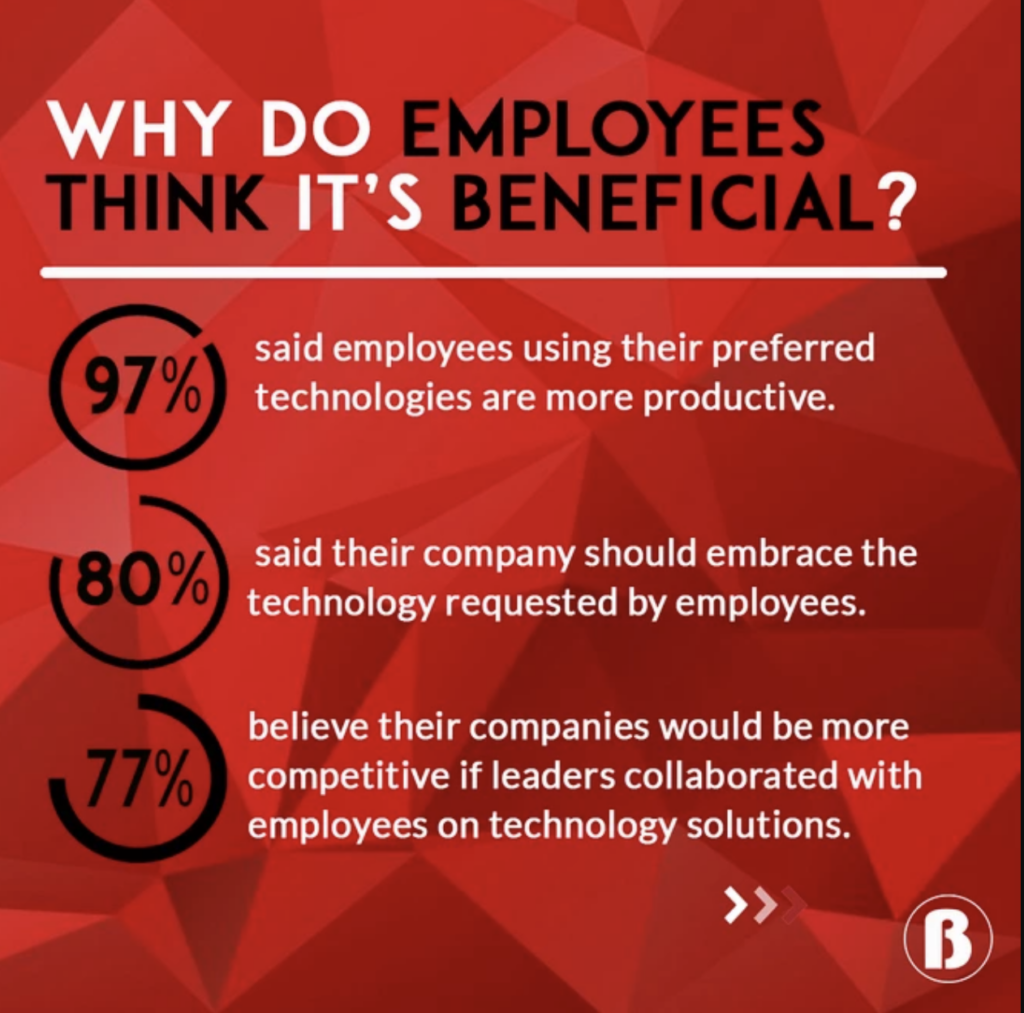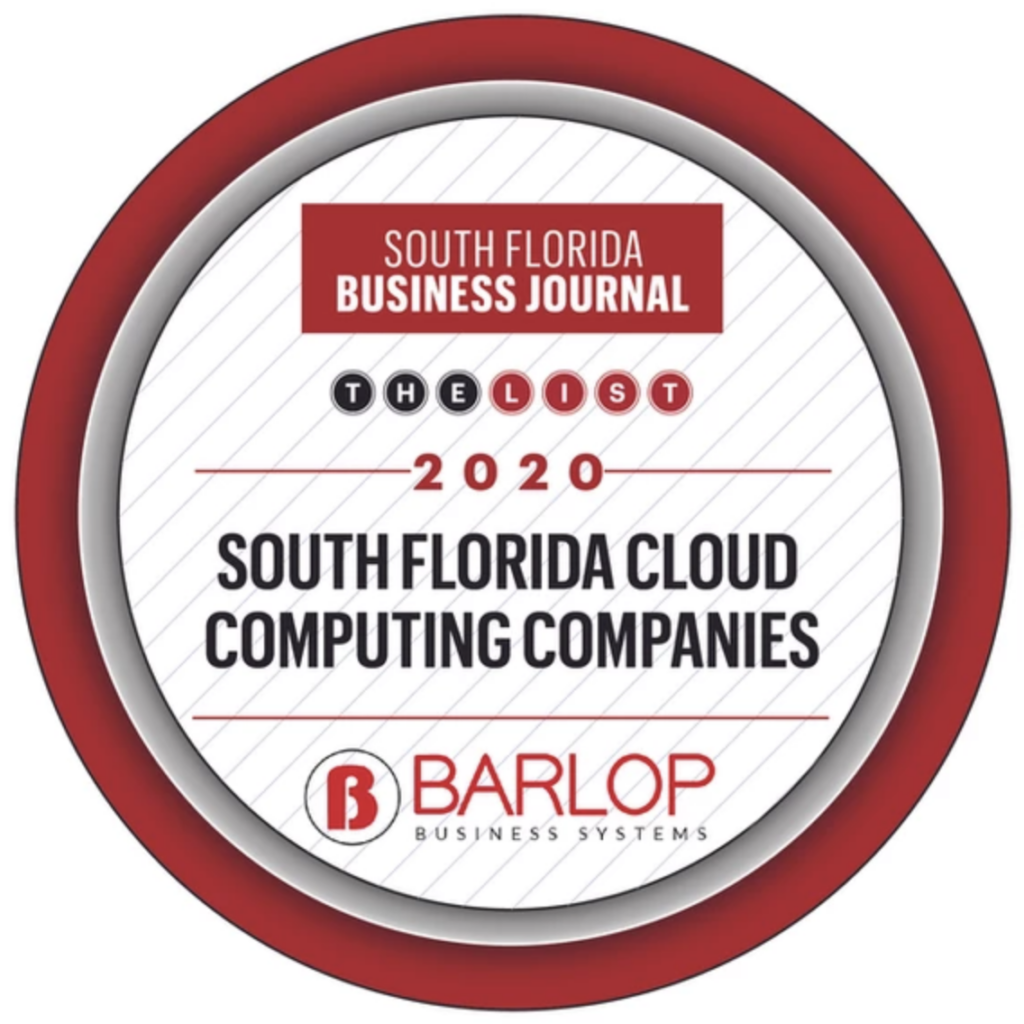Shadow IT exists in almost every business and organization. The word “shadow” gives it an ominous tone. But it’s not really.
The IT professionals who support your organization know about it. They may even encourage some elements of it.
You may even be involved.
Shadow IT is rarely a hidden practice. It does come with risks and costs – but also potential benefits to both employees and the business. It is important to note that employees use these not to “get around company policies” but in most cases, because they find a tool that they like, which facilitates their job.
In this article, we will:
Answer the question, what is shadow IT?
Share common examples
Explain the risks and dangers
Explore the challenge presented by a remote workforce
Discuss the benefits of shadow IT

What is Shadow IT?
Shadow IT describes all of the devices, applications, platforms, and technologies used outside your IT department or provider’s control and knowledge. The use of non-managed applications and technology can reflect individual user preferences. It may also reveal issues with the tools selected for use by employees and departments. For example, some problems could be as follows:
Lack of training. Without proper training, a user may not fully understand how to use a new platform or application. Previous tools – like those used at a former job – may be preferred. Users cannot replace a customer records management tool (CRM); however, they may use alternative applications to work with the tool’s data.
No input. Employees live in the process. They often know what they need to be more efficient. Asking for their input when choosing tools and technology goes a long way to reducing third-party tool use.
Too difficult, too slow. IT-controlled VPNs and file shares can be slow and difficult for employees to use. Cloud storage applications make it easy. All employees need – especially remote workers – is an internet connection.

Examples of Shadow IT
These applications and tools may help organize workflows but they also put company’s information outside your company’s security protocols.
Your IT group manages your network files and applications.
– GoogleDrive™
– DropBox®, or
– OneDrive™
– Trello
– Click-up
– SaaS Platforms
– BYOD
In each application above the device engages with business systems and date outside your company’s IT control and monitoring bring potentials danger and changes of cyber attacks.
Risks of Shadow IT
Shadow IT can create a variety of issues for your data and your business.
These four represent the most common and significant problems of shadow IT to an organization.:
Data security. Uncontrolled and unmonitored endpoints like smartphones and third-party cloud applications become open gateways into an otherwise secured network. Even if your network and application are secured, the data transmission between the two may not be. This can be especially true for remote workforces. When it comes to data security, shadow IT is a cybersecurity nightmare.
Compliance. Data security and compliance are closely related. Shadow IT practices pose a threat to compliance even if your data never becomes compromised, depending on your compliance requirements (HIPAA, Sarbanes-Oxley, or PCI, for example).
Time lost. The use of non-supported applications requires that the user solve any technical issues that arise. While many employees today are quite capable of solving technical problems, doing so takes time away from core business activities and although responsible employees will work “overtime” to see that the job gets done, this extra time eats into their personal hours. Employee frustration and dissatisfaction often result, directed at IT – for not providing the tools needed!
Collaboration disconnects. When users choose their own tools and platforms, the potential for non-compatible file types increases. This can interfere with collaboration efforts in terms of how time is spent, i.e., solving technology issues rather than productive activities.
Shadow IT and your remote workforce.
The increase in remote workers has created an influx of new unsupported hardware, software, and cloud applications. Some of these should be controlled, others are just a reality of the remote work model and are best left that way.
IT departments shouldn’t support:
– Home printers or family devices on same network as business devices.
– Too many third party applications
– Home Gateways
Shadow IT introduces potential security gaps, but it also offers many potential benefits, the ability to work remotely being one.

Benefits of Shadow IT
Without question, the cons of shadow IT are its significant risks. As such, you might think IT professionals would only see those and seek to prevent it. The opposite is often true. For example, one survey of IT professionals reported:
97% said employees using their preferred technologies are more productive.
80% said their company should embrace the technology requested by employees.
77% believe their companies would be more competitive if leaders collaborated with employees on technology solutions.
These responses reveal that shadow IT has positives too.
These benefits include:
Increased productivity. Employees get more done when they use the tools and applications they like and with which they are familiar.
More eyes looking for better tools. Finding new technology may once have been the responsibility of technology professionals and department managers. Today, many employees are plenty comfortable searching for tools to make their jobs easier.
Expert insight. Employees have two pieces of knowledge that make them the perfect source of insight for ways to increase efficiency and drive productivity: 1) practical, day-to-day experience with the task, and 2) the inefficiencies in the process.
Empowered employees. When employees contribute to technology selection, they buy-in more to the company and its goals, taking greater responsibility for their work and company success.
Lower technology and office costs. In some cases, shadow IT can save organizations a bunch of money. Bring your own device (BYOD) removes the expense of providing mobile devices to employees. On the upside, they reduce office expenses such as leases, equipment rentals, IT hardware, utilities, etc.


OTHER SOLUTIONS AND SERVICES BARLOP PROVIDES:
Managed IT services.
Technology has become so mobile and diverse that few IT departments have the resources to monitor and track every device, 24 hours a day, 7 days a week. An increased remote workforce has only stressed already stretched resources. Barlop’s IT services offer comprehensive IT services with enterprise-level tools to monitor, track, and manage an organization’s infrastructure, devices, and more.
Cybersecurity services.
Bring-your-own-device and remote workforces create security gaps that malware, ransomware, and other cybersecurity threats can exploit. The challenge of protecting endpoints like laptops, PCs, smartphones, and tablets has grown, especially when they can connect to the internet through unsecured connections. There are ways to manage and protect all of these shadowy endpoints. For companies with limited resources, managed security services can help.

